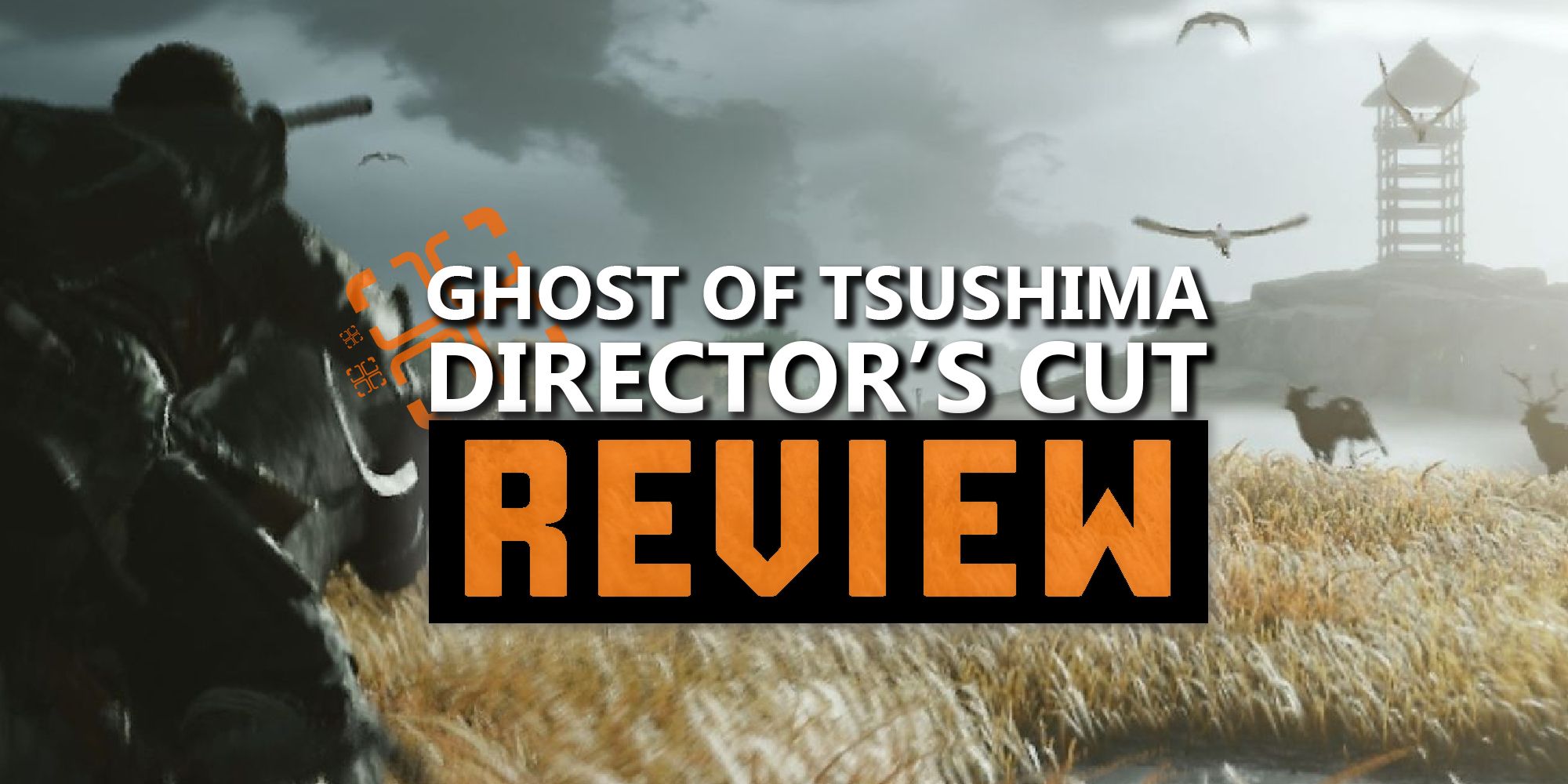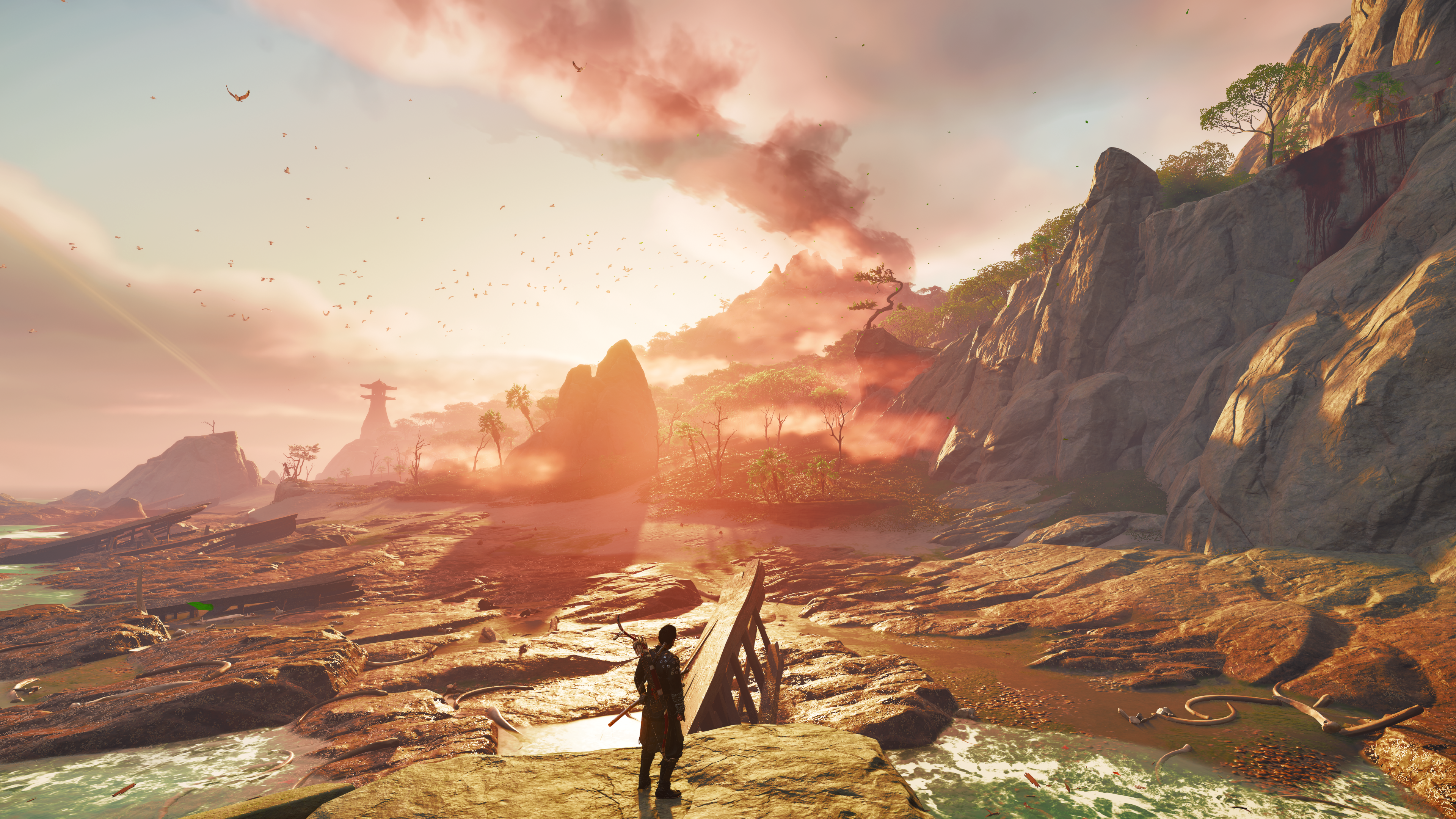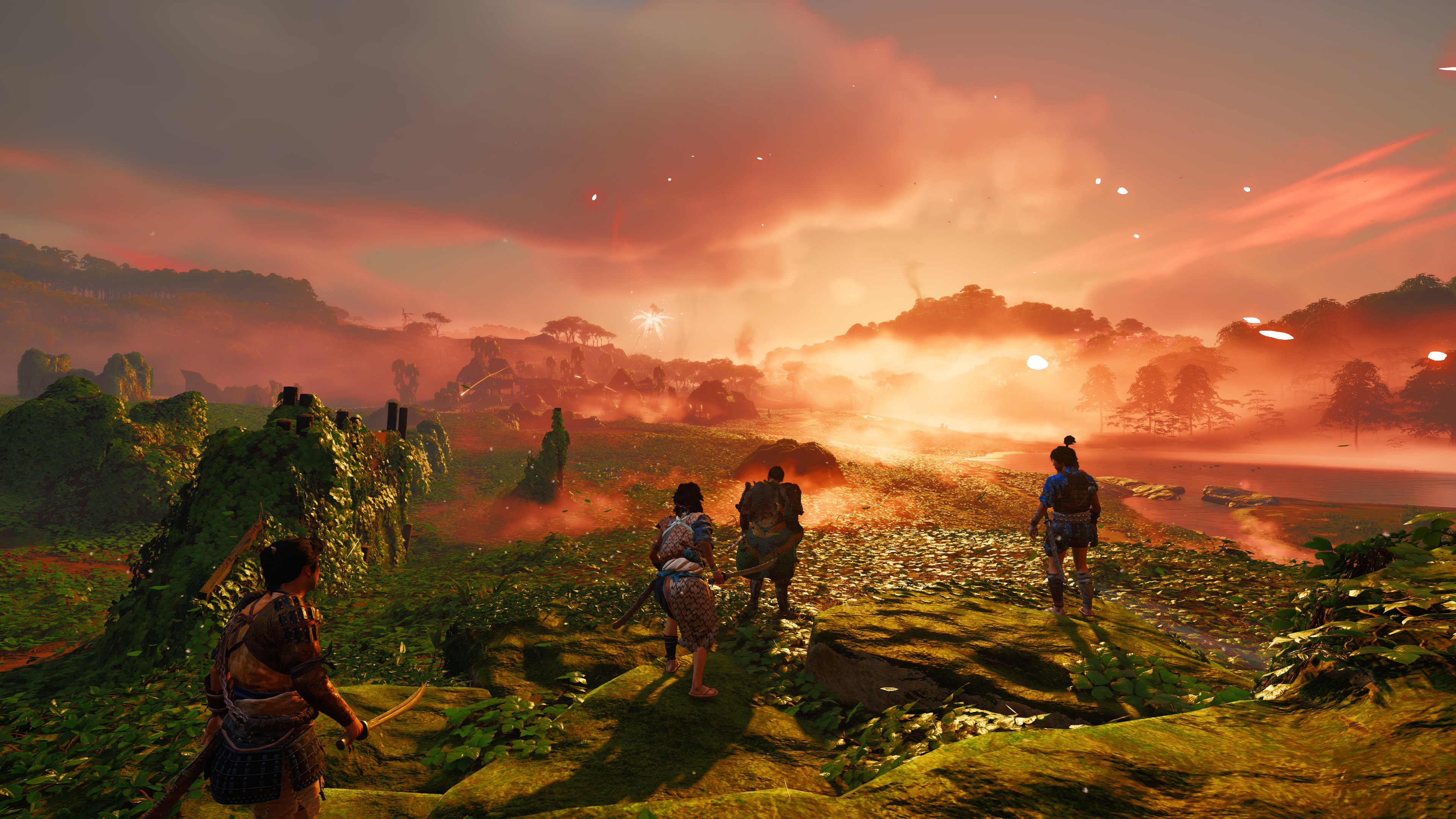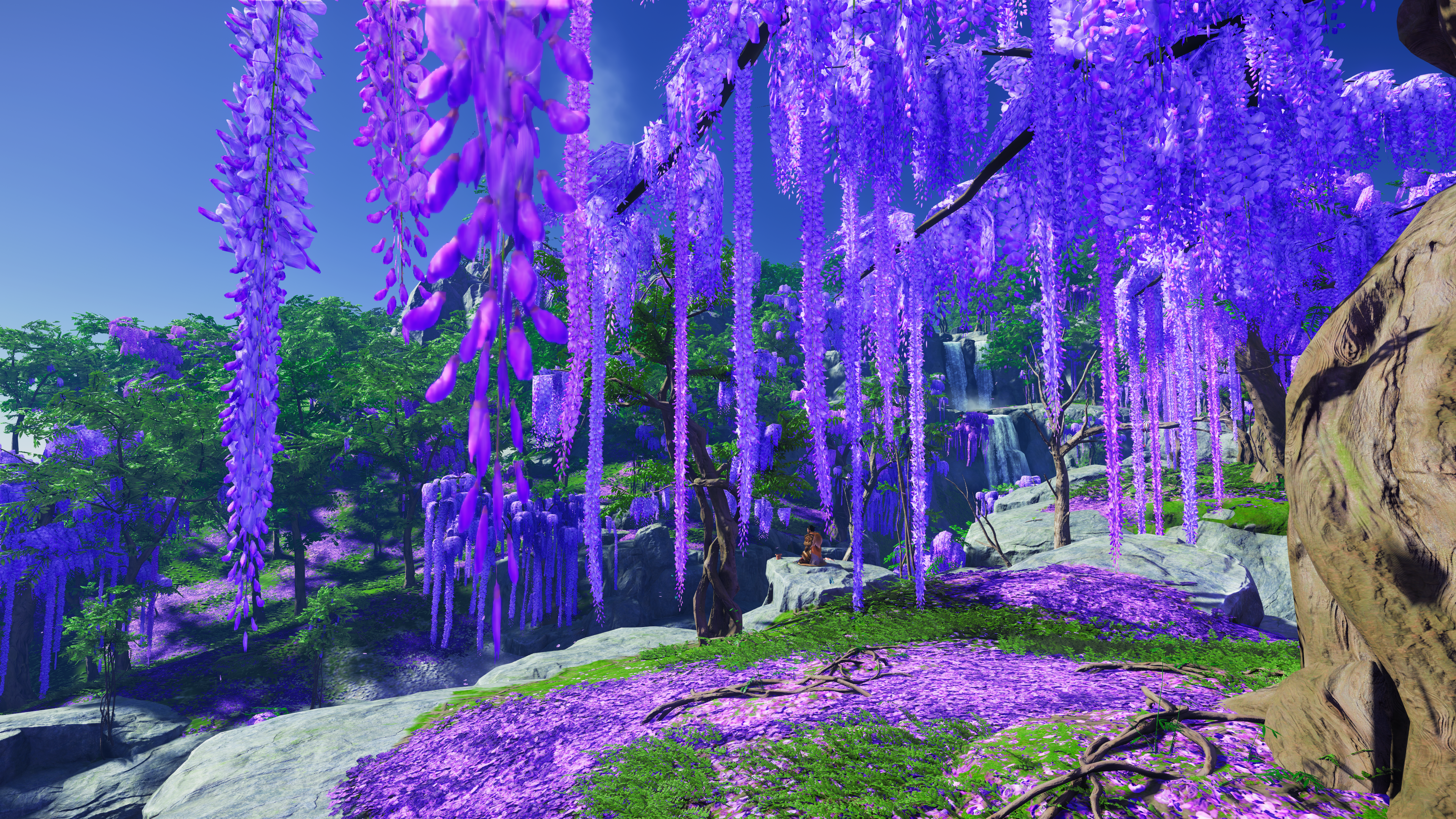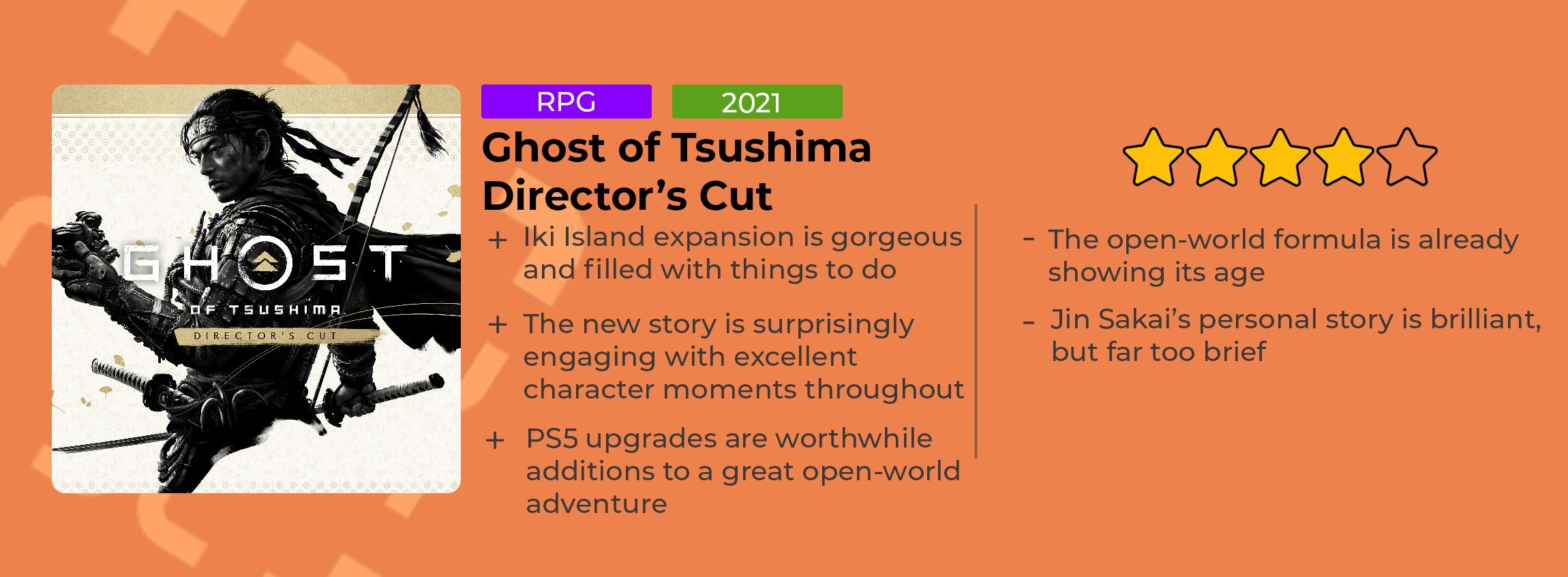Ghost of Tsushima was already a beautiful game, and the Director's Cut only augments that beauty. Jin Sakai's journey is one of gorgeous redemption, an open world adventure where you are free to explore sprawling rice fields occupied by hard-working farmers, and ancient temples showered by an eternal rainfall of cherry blossoms. Every other minute there's an excuse to enter photo mode and spend hours crafting your own testaments to this virtual rendition of Japan, and it's one I had a lot of fun returning to despite my short time away.
I platinumed the original game, so entered the Director's Cut with my attention centered on Iki Island, a new expansion that exists independently of the main story. Accessed after you complete the first act, which itself is several hours long, Iki Island is a wondrous place that’s under siege by the Mongol Empire. With my business on Tsushima concluded, I left the game’s main landmass behind in search of a new story, one that would take Jin Sakai on a personal road of discovery that critiques the Samurai code and concept of honour far better than the main narrative ever managed to. It's just a shame that Iki Island's story missions are so short, making it a place that’s defined by collectible busywork.
Upon arriving on Iki Island you are quickly taken hostage by The Eagle, a mysterious shaman working alongside the Mongols. She has a reputation for poisoning her enemies and forcing them to join her evil crusade. Jin is soon afflicted, forced to experience hallucinations of his past on this island, and how it became the resting place of his warmongering father. In these visions, Jin must confront his childhood and come to terms with the problematic motivations of his father - his twisted willingness to murder innocents so long as it broadens his territory and abides by the Samurai code. It’s a side of Tsushima’s moral quandary we haven’t seen before, with Jin forced to re-examine his own memories and decide which side of history he hopes to reside on.
This conflict is deepened with the presence of rebels on Iki Island, the same people who fought against and murdered Jin’s father so many years ago. They’re aware of Jin’s background and that of the Samurai, but are still willing to help a man in need despite the trauma associated with men foolishly claiming to kill in the name of honour. I won’t spoil much else here, but Ghost of Tsushima has learned to critique its own historical influences, expanding upon Jin’s previously black and white struggle with morality and transforming it into something far more nuanced. The runtime is too brief for it to leave a lasting impact, but watching as Jin comes to terms with his own history and how his father wasn’t the untouchable warrior he spent years admiring is sobering to witness.
In a rare twist on a generation filled with gruff gamer dads, the real spotlight belongs to Jin’s mother. Having passed away due to illness, Jin will regale you with touching anecdotes when playing songs on his flute at animal sanctuaries. These are moments of quiet melancholy, with our hero reminding us of a past filled with loved ones he was sad to leave behind, while coming to realise that the Samurai code he has spent years defined by isn’t a way to fill his own loneliness. It’s a shame you need to comb the open world in search of repetitive icons in order to discover them, with the main campaign coming to a close after only a handful of admittedly excellent missions. Its greater moments of character development and world building rarely have enough time to breathe, its themes put aside in favour of rote level design, repetitive battles, and linear set pieces. This doesn’t make it terrible by any means - though I do wonder what Sucker Punch could have done if it married its themes with gameplay in a more holistic way.
Ghost of Tsushima still feels incredible to play and Iki Island manages to build upon its rhythmic combination of stealth, exploration, and combat with new enemy types and abilities that reward the act of timeful parries.
It’s a good expansion that could have been essential if it leaned heavier into its most interesting aspects. Iki Island is familiar territory from the moment you step onto its sun-drenched shores, the map filling up with missions and icons you are free to uncover at your own pace. Mongol Settlements can be overtaken, cosmetics can be found at Shrines of Honour, and there’s even a couple of giant mountains for you to ascend in exchange for items you’ll probably never use. It’s all here, and I loved it, but that doesn’t mean I can’t recognise the flaws within such a tried-and-true open world design template.
New side activities like archery challenges and animal sanctuaries are worthwhile additions, but are all largely similar in execution and are discovered in the same repetitive way. I achieved 100 percent completion on Iki Island, and it’s an inviting place to explore, but one that remains drenched in familiarity despite its excellent character writing and surprisingly poignant storytelling. This might be pitched as a Director’s Cut, but it isn’t venturing far from the original vision, determined to abide by its blueprint instead of teasing an ambitious future for the inevitable sequel. Still, it remains a fun time, and the next-gen upgrades are substantial enough that you shouldn’t feel short-changed for throwing a few pennies on the new version.
The PS4 version already looked lush, and PS5 owners long ago received a patch that allows for 60fps gameplay, so the Director’s Cut’s main attraction is enhanced feedback that makes creative use of the DualSense controller. Each trot of your horse is reflected in vibrations, intensity fluctuating as the surface you clamber upon changes or when you roar down hills towards a gaggle of Mongols. Combat and movement both feel more immersive as a consequence, the clashing of swords ringing in your hands with satisfying impact, while the use of your grappling hook to pull away doors and obstacles exhibits a real sense of pressure as your fingers press down on the triggers. None of these moments are game-changing, but they help Ghost of Tsushima feel like a more modern experience, and one that justifies the fancy new hardware it now sits upon.
Aside from the better performance, new controller features, and the Iki Island expansion, this is the same game you played last year. If you want to chase all the trophies again, don’t transfer a save over like I did since all of them will pop automatically. However, this is also the only way to access the new expansion without playing through a large chunk of the game a second time.
Ghost of Tsushima: Director’s Cut is the best version of an accomplished open world adventure with great characters, excellent combat, and a setting that is constantly inviting to explore. While the base game falters in its storytelling, the Iki Island expansion manages to tell a nuanced story of parental influence and the challenge of moving on from the past in spite of your personal allegiances. It’s the most human Jin Sakai has ever been, yet the brief campaign and emphasis on familiar busywork hold it back from potential greatness. If you didn’t like the game before, this won’t change your mind, but fans will find a lot of added brilliance to dig into here alongside a narrative journey well worth taking.
Score: 4/5. A PS5 review code was provided by the publisher.
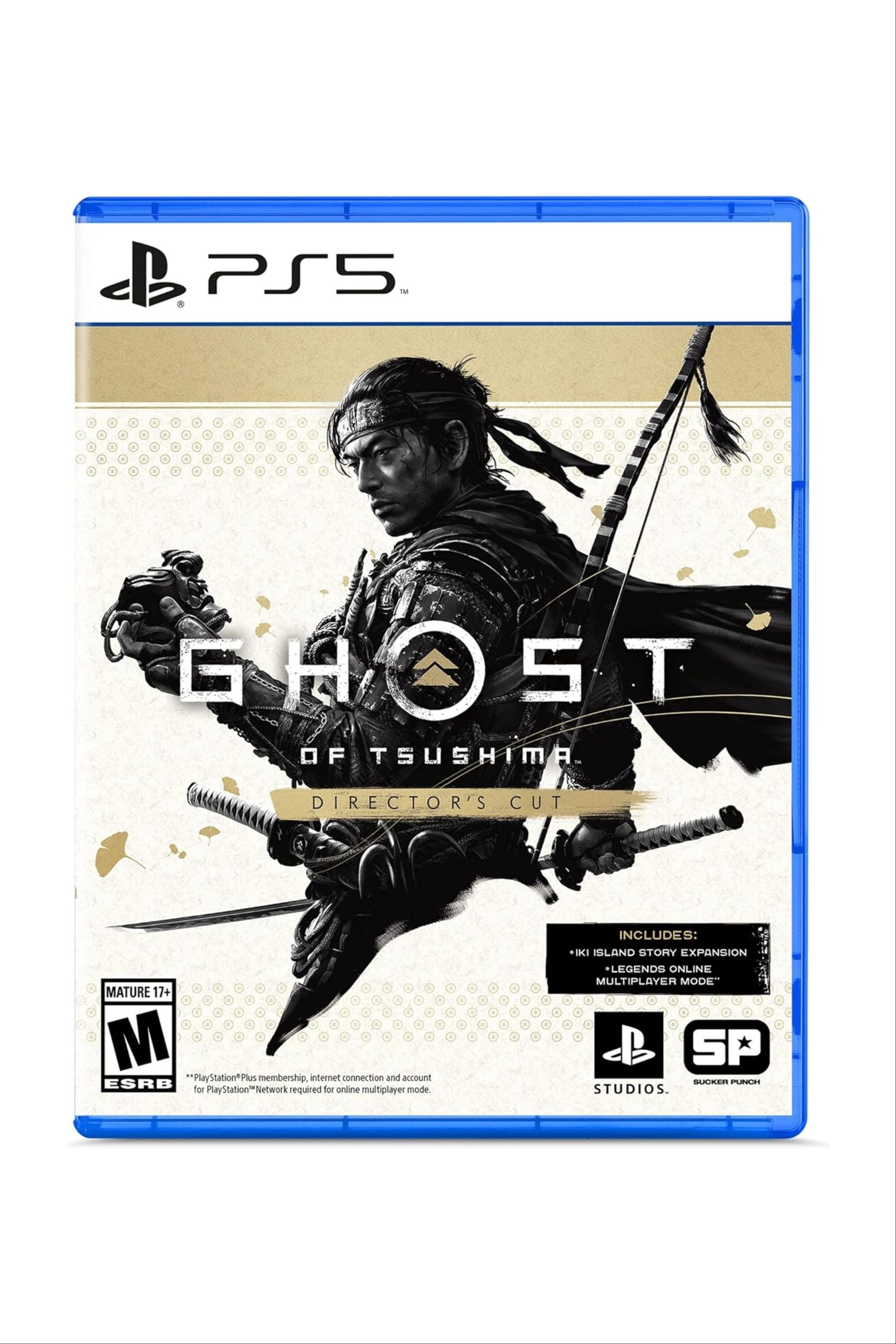
Ghost of Tsushima Director's Cut - PlayStation 5
The Ghost of Tsushima: Director's Cut for PS5 includes the Iki Island expansion as well as the Ghost of Tsushima Legends multiplayer mode.

